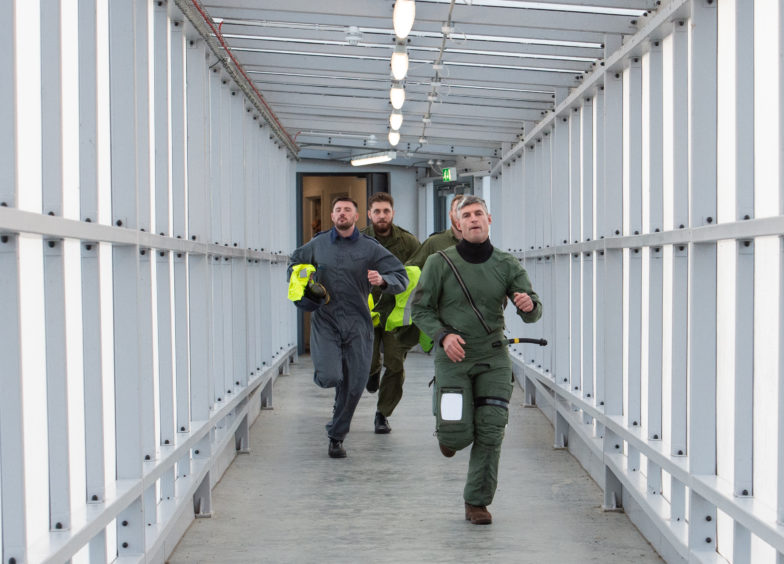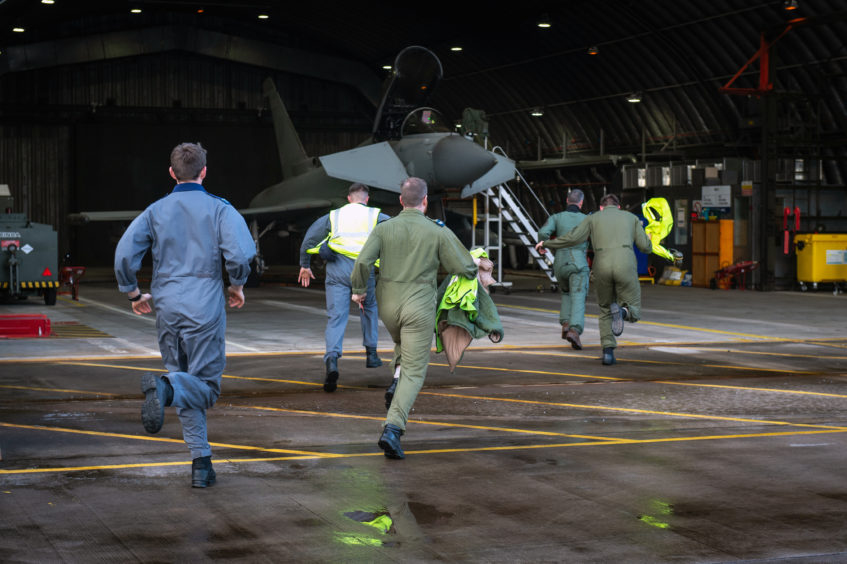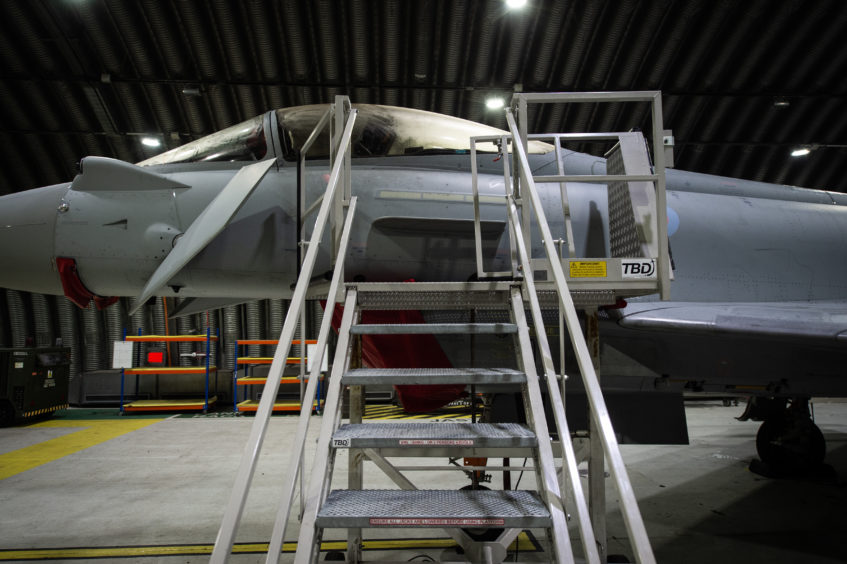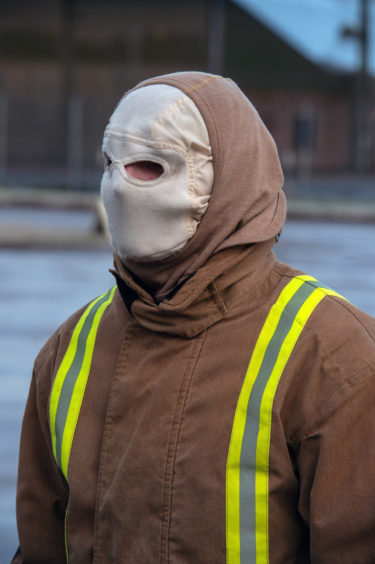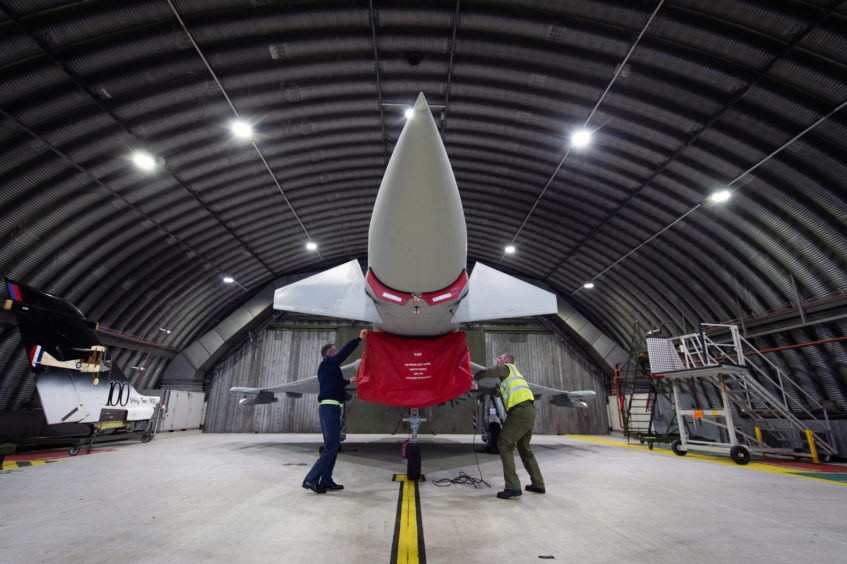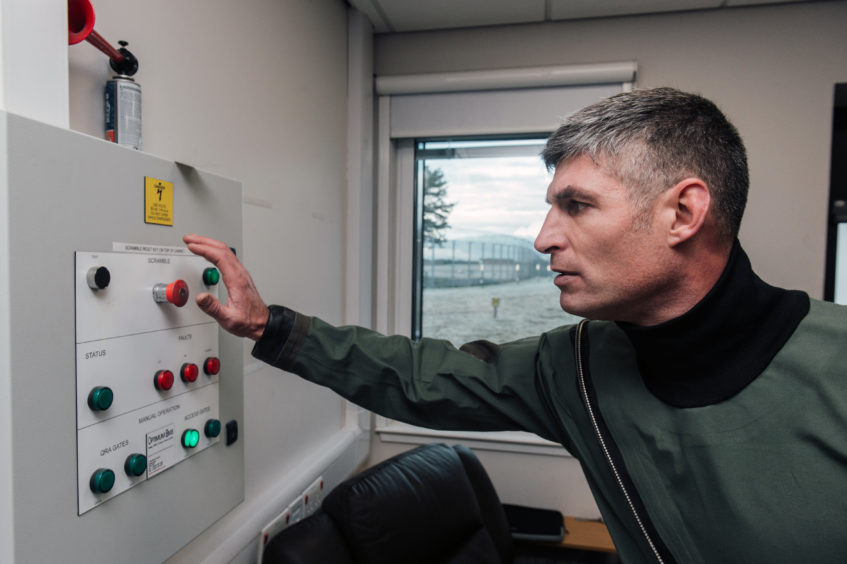The wail of a siren pierces the still winter air before the thundering sound of a heavy-booted crew sprinting builds to a crescendo.
Bursting out of the compound, the team of pilots, aircraft engineers and weapon technicians race towards the hardened aircraft shelter’s doors that are slowly drawing back to unveil the striking defender of the skies; the Typhoon fighter jet.
This is a Quick Reaction Alert (QRA) scramble in action at RAF Lossiemouth on the Moray coast.
QRA is a state of constant readiness of the entire UK Air Defence system personnel and their Typhoons.
They are on standby to protect UK and NATO airspace against airborne threats 24-hours-a-day, 7-days-a-week, 365-days-a-year, by the call of an alarm.
With its prime north-east location and the only base in Scotland to conduct QRA missions, RAF Lossiemouth is one of the most important air stations in the UK.
The Moray base tracks and intercepts the giant Russian long-range strategic bombers that probe the UK’s airspace to gauge reaction times, providing a vital deterrent to incursion by foreign powers.
Whilst most of the country unwinds with friends and family in cosy homes over the Christmas holidays, the valiant men and women of RAF Lossiemouth are stationed at the QRA facility morning, noon and night to keep the skies and people of the UK safe.
For the stalwart crew, Christmas and New Year is just like any other working day in their mission to detect and intercept airborne dangers.
Experienced QRA pilot, Flight Lieutenant Zane Sennett, said: “It’s important to realise that when people are having their Christmas turkey and enjoying the festivities over New Year that the whole team here – not just the pilots that operate the aircraft, but the engineers and the airspace battle managers who are monitoring the airspace around the UK – are on high alert and ready to spring into action to keep the nation safe.”
And it’s not just the crew based at RAF Lossiemouth that are tasked with QRA missions.
There there are hundreds of personnel deployed in locations all over the world, such as the Falkland Islands and Cyprus, who are guarding the skies of the UK over Christmas.
Group Captain and Station Commander for over two years at Moray’s RAF base, Jim Walls sends each RAF crew stationed abroad a hand-written Christmas card and visits the base on the day to wish everyone well.
However, with their 24/7 duty to be ready to enact a QRA mission, Commander Walls says that for himself and his crew there is no moment’s rest.
He describes a QRA scramble as everything being quiet and then “all hell breaking loose”.
It sends adrenaline pumping and hearts racing but the skilled personnel quickly conquer their emotions to perform at a high level.
Commander Walls said: “It’s minutes from being sat in a chair to being airborne at any time to defend the nation – it’s our number one mission.”
After a successful year in which numerous QRA scrambles protected the UK’s airspace from unwanted intrusion, RAF Lossiemouth’s Station Commander is proud of his crew and looking forward to 2020.
Commander Walls adds: “It’s a really exciting time for us because as well as being a Typhoon station, with four Typhoon squadrons deployed globally defending the nation with QRA, we’re bringing home to the United Kingdom the new Poseidon fleet of submarine-hunting maritime patrol aircraft early next year.
“We’ll then be able to protect the seas as well as our skies.”
The facts and figures of the keeping the UK’s skies safe
During the course of 2019, QRA missions were launched from RAF Lossiemouth on 14 separate occasions.
Out of these days, eight were interceptions by RAF Typhoon jets of Russian military aircraft which had approached the UK’s airspace.
The other six occasions were classified as “other” which could be any aircraft entering the airspace, perhaps suffering from technical difficulties or forced to divert its route.
UK Typhoons were also scrambled 21 times to intercept Russian aircraft attempting to penetrate Estonian airspace. Overall, there were 56 incursions over the Baltic State.
Those continental actions were undertaken as part of the personnel and Typhoons from RAF Lossiemouth’s frequent NATO Air Policing missions, which has seen them recently deployed to Estonia, Iceland and Romania.
And in addition to efforts in locations such as the Falkland Islands and Cyprus on QRA missions, RAF Lossie Typhoon personnel also operate in the Middle East as part of Operation SHADER, an ongoing military operation against the Islamic State.
Since the operation commenced, more than a thousand air strikes have been undertaken by the RAF and more than 4,300 missiles launched by Tornado, Reaper and Typhoon aircraft.
At the beginning of December, 129 RAF Lossiemouth personnel returned from Iceland with all four Typhoons, having flown 59 training sorties and over 180 practice intercepts.
The new year is to bring many exciting developments to Lossiemouth, with 2020 to be a hugely important 12 months for the RAF Station.
There will be 470 additional service personnel welcomed onto the Moray base – taking the total number of men and women employed there to 2,200.
And new £132 million strategic facility to house a nine-strong wing of submarine-hunting maritime patrol aircraft called the Poseidon P-8A will soon be complete.
The first of the aircraft will arrive in Scotland in February.
They are to be initially held in Kinloss while a £75 million contract to resurface the runways and operating surfaces at Lossie is underway.
